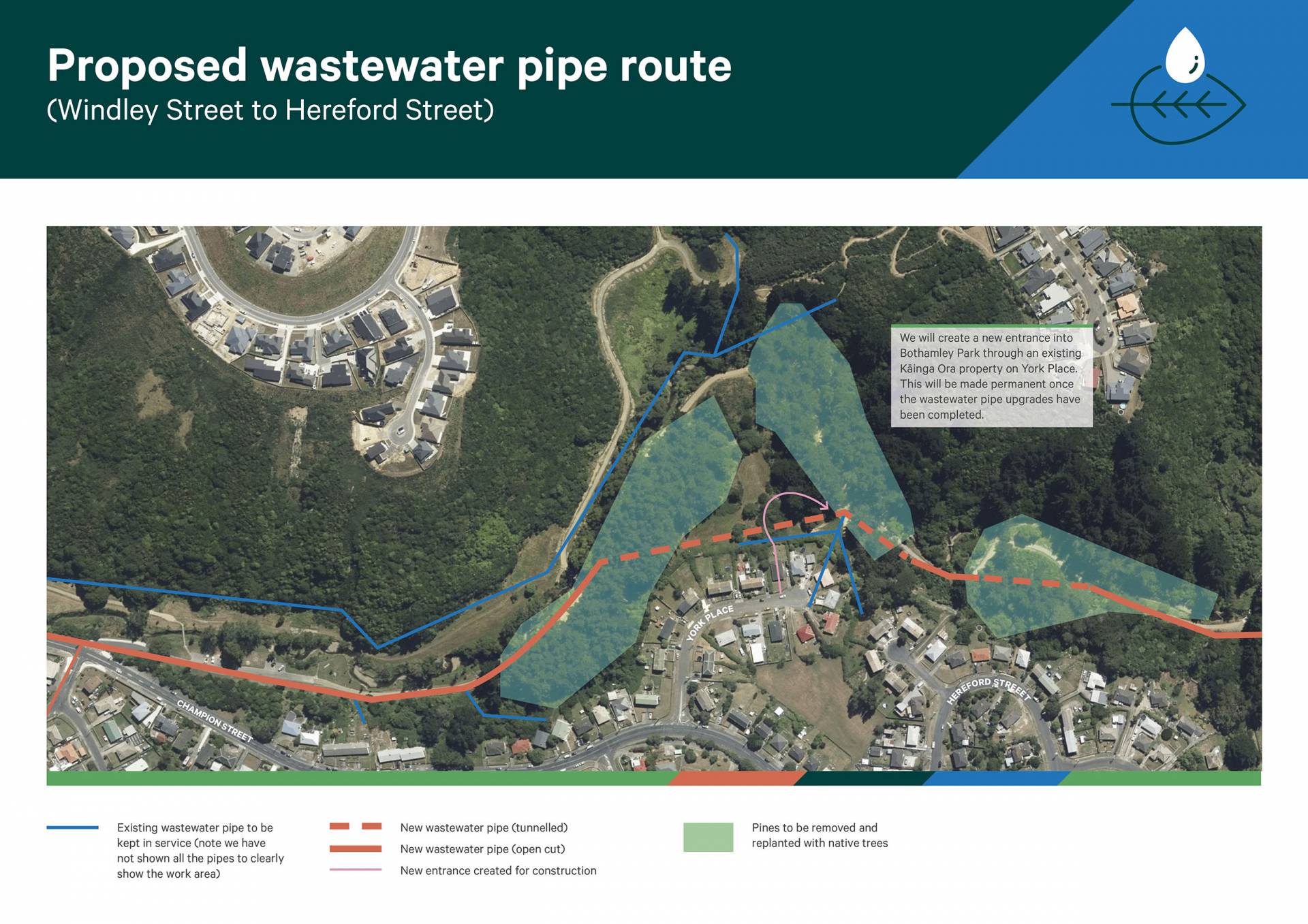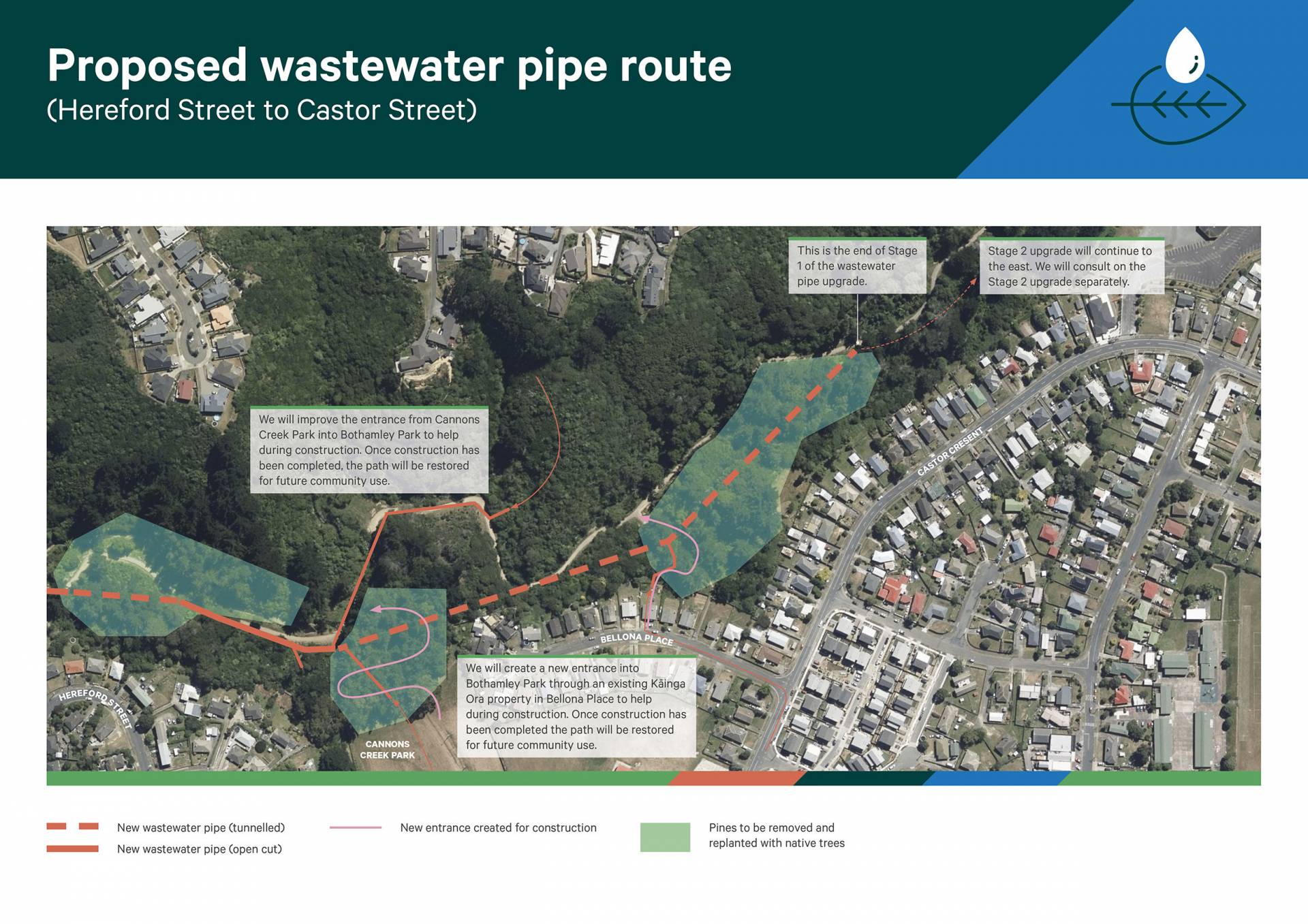Upgrading the wastewater pipes
Over the last few years we’ve been investigating the ground conditions through the park. This has helped us to learn more about the make up of the area and where the best places will be to lay the new pipes. Below is where we are putting in the new wastewater pipes.

Summary of how we could fix Bothamley Park's wastewater pipes
The opportunities
Instead of just replacing the wastewater pipes, we wanted to make improvements that will not only be better for our environment and community, but also help improve the look and feel of Bothamley Park. We are to lay new wastewater pipes that will:
- Minimise the amount of raw sewage overflowing into waterways
- Be built with environmentally responsible materials that will last generations
- Remove 10 existing above-ground stream crossings
- Reduce the number of visible stream crossings, with only three new stream crossings required, all of which are below the stream bed
- Have fewer manholes
- Be more resilient in natural events i.e. earthquakes
- Improve entrances into the park
It's a big job!
We have started upgrading the wastewater pipes through Bothamley Park. Click on each map for a better picture of the proposed pipe route and how we are doing to improve the wastewater pipes through the park:
Key things you need to know
- The main track from the Champion Street carpark to the blackberry harvest area will need to close for approximately two years from the beginning of 2023.
- Other parts of the park will close for short periods of time but there will always be parts of the park open for walking, cycling and for the community to enjoy.
- Champion Street will be required to close for a period of time, read more here
- We will work with Porirua City Council, Waka Kotahi and others to minimise noise, dust and traffic disruption as well as to keep the community safe while we upgrade the wastewater pipes.
- For local residents who live close to the park and are more impacted by the works, we will make sure you know ahead of time of the upcoming works.
- To complete this work as safely and quickly as possible, we will need to remove some of the pine trees through Bothamley Park. This provides an opportunity to landscape and replant key areas within the park.
- We will work closely with the community and our development partners, Ngāti Toa Rangatira and Porirua City Council, to create something that meets today’s aspirations and is also sustainable for future generations.
Click here for a PDF factsheet about the wastewater pipe upgrade
Click here to see the latest update







